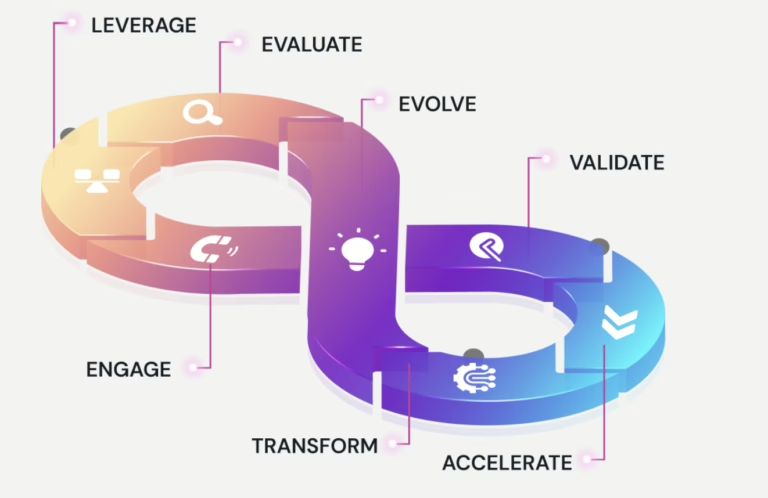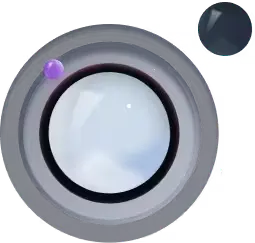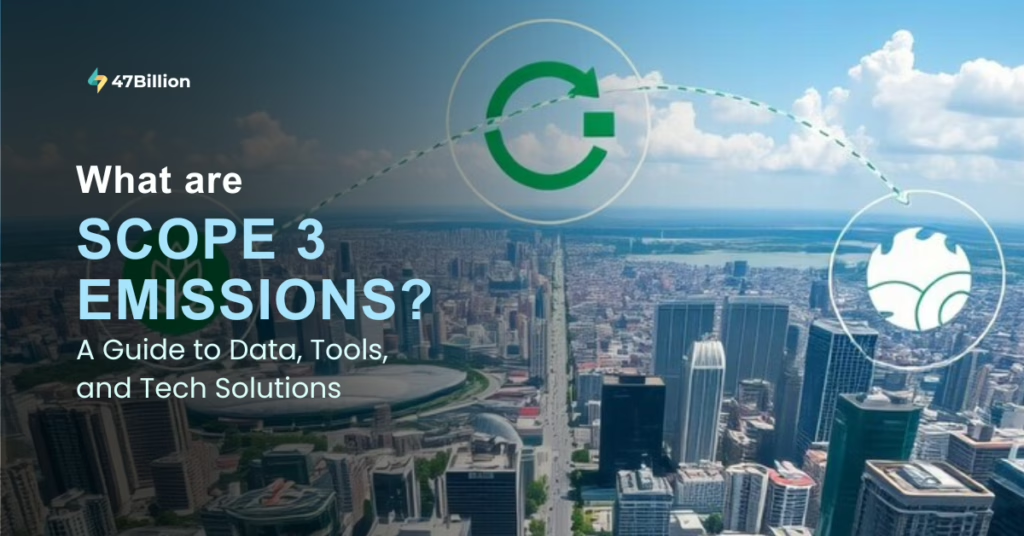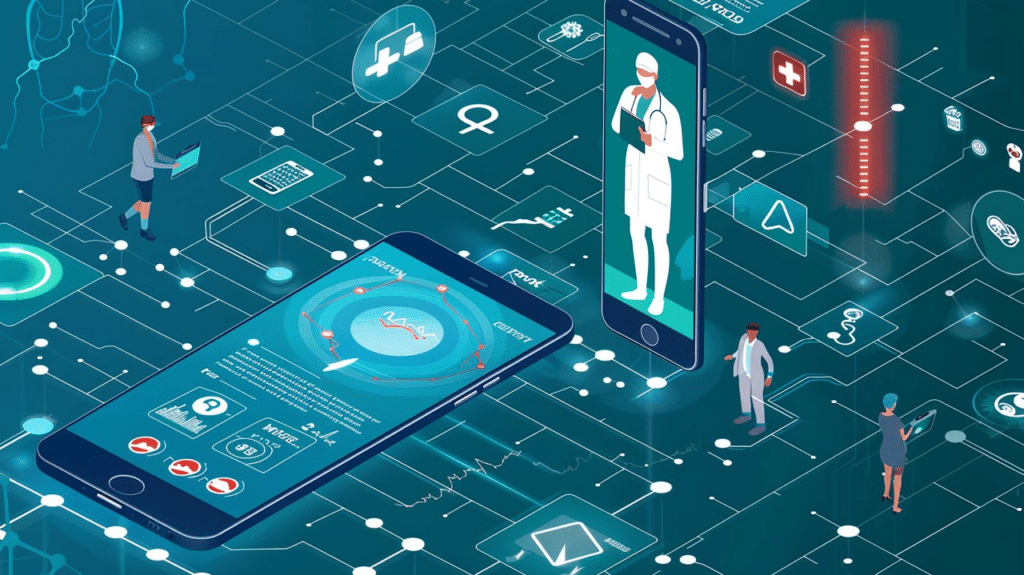Why Scope 3 Can’t Be Ignored Anymore?
In the race to net-zero, one blind spot looms large: Scope 3 emissions. Unlike direct emissions (Scope 1) and purchased energy (Scope 2), Scope 3 covers the emissions a company doesn’t directly control—but is absolutely responsible for. Think upstream suppliers, product distribution, business travel, and even customer use and disposal.
Scope 3 emissions often account for more than 70% of a company’s total carbon footprint, yet remain the least tracked and most complex to measure.
At 47Billion, we believe tackling Scope 3 emissions requires more than carbon accounting—it demands technology-enabled transformation. And companies that invest now will lead the next era of sustainable growth.
What Are Scope 3 Emissions?
According to the Greenhouse Gas Protocol, Scope 3 emissions include 15 distinct categories across a company’s value chain:
Upstream (from suppliers):
- Purchased goods and services
- Capital goods
- Fuel- and energy-related activities
- Upstream transportation and distribution
- Waste generated in operations
- Business travel
- Employee commuting
Downstream (to customers):
- Use of sold products
- End-of-life treatment
- Franchises and investments
This makes Scope 3 a massive and multifaceted challenge, particularly for companies with global, complex supply chains.
Why Scope 3 Reporting Is So Challenging
Based on insights from IBM and industry experience, the main challenges are:
- Fragmented data across third-party vendors who may not track emissions
- Inconsistent standards across regions and sectors
- Low digital maturity of suppliers, especially SMEs
- Dynamic supply chains that frequently change
- Manual or incomplete data collection through spreadsheets or emails
- Absence of centralized systems for end-to-end emissions visibility

The Role of Technology in Tackling Scope 3
Advanced technology is making Scope 3 emissions measurable and manageable. Here’s how:
1. Automated Data Collection and Integration
Modern ESG platforms can integrate with:
- ERP and procurement systems
- IoT sensors and shipment trackers
- Supplier data repositories and logistics networks
These integrations allow for continuous, verified emissions data instead of fragmented manual entries.
2. AI-Powered Estimation Models
When supplier data is unavailable, AI and machine learning can estimate emissions based on:
- Product category
- Transport methods
- Country- or region-specific emission factors
IBM’s hybrid model combines primary supplier data with secondary estimation models to maintain transparency.
3. Lifecycle Assessment (LCA) Tools
These simulate emissions across a product’s entire life—from raw material extraction to usage and disposal—offering full visibility into downstream impacts.
4. Blockchain for Supply Chain Traceability
Blockchain ensures secure, verifiable emissions data across vendors, eliminating manipulation and improving trust.
5. Supplier Collaboration Platforms
Portals that allow suppliers to submit emissions data in standardized formats, validate calculations, and improve accuracy over time.

Tech-Powered Scope 3 Use Cases
| Application | Purpose |
| Digital Twin Modeling | Simulate supply chain impact and emissions in a virtual environment |
| Emission Forecasting | Predict future Scope 3 trends based on sourcing and demand behavior |
| Supplier Benchmarking | Compare vendors by ESG performance, emissions intensity, and compliance |
| Green Procurement Dashboards | Rank vendors and materials by sustainability impact |
| Gap Analysis Engines | Identify missing or outdated supplier data |

Real-World Example: Tackling Scope 3 with AI and Data Integration
A North American food and beverage company faced challenges in collecting emissions data from hundreds of packaging and logistics vendors. By integrating ESG and ERP platforms, the company:
- Mapped 80% of upstream Scope 3 emissions in real time
- Used AI to fill gaps and model emissions across geographies
- Employed blockchain to ensure supplier data validity
- Reduced total emissions by 22% in one year

How 47Billion Helps You Lead the Change
47Billion brings together sustainability intelligence and product engineering to help businesses:
- Design and implement scalable Scope 3 emissions tracking tools
- Automate data collection from internal systems and external partners
- Use predictive analytics and AI to estimate, simulate, and monitor Scope 3
- Integrate emissions data with ESG reporting frameworks like GRI, BRSR, CSRD
- Visualize Scope 3 metrics through role-based dashboards and alerts
Whether you’re starting from scratch or scaling your ESG infrastructure, we help you build a tech-enabled foundation for long-term sustainability.

Scope 3: From Reporting Burden to Strategic Differentiator
Accurate Scope 3 data can unlock much more than compliance. It can enable:
- Smarter supplier choices
- Greener product design
- Climate-aligned business strategy
- Better investor reporting and consumer trust
IBM’s industry analysis suggests companies that digitize Scope 3 disclosures early will be better positioned for climate-linked financing, competitive differentiation, and regulatory alignment.

Conclusion: Don’t Wait for Perfect Data—Start with Better Systems
Scope 3 doesn’t have to remain a black box. With the right technology stack—from AI to blockchain to supplier collaboration portals—companies can shift from guesswork to granularity.
The time to act is now. The companies that lead on Scope 3 today are the ones that will shape the climate economy of tomorrow.

Let’s Get Started
Want to transform Scope 3 from your biggest ESG challenge into your biggest sustainability advantage?
Reach out to 47Billion to build your intelligent ESG ecosystem.







